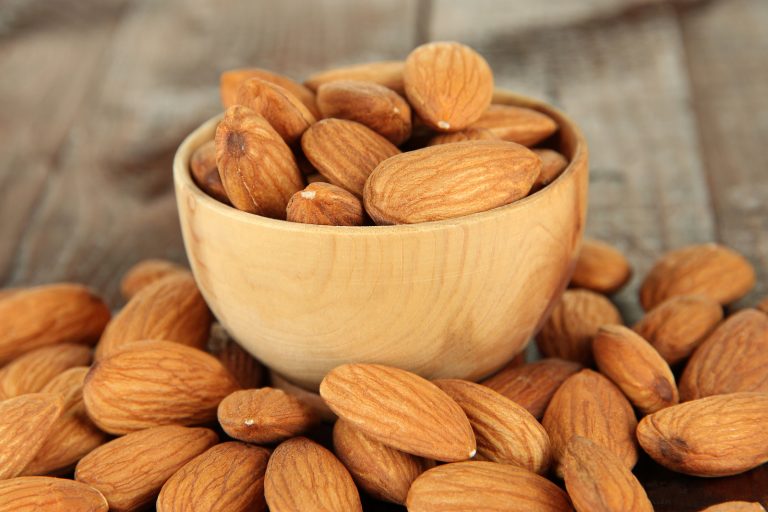Monday, February 16, is National Almond Day. When you celebrate with a handful of sweet yet crunchy almonds, remember that southwestern Arizona grows some of the tastiest, most nutritious almonds in the nation.

If you don’t like your Arizona almonds raw, or even with sugar coating, Fill Your Plate – a project of the Arizona Farm Bureau – has some wonderful recipes from the pens of Arizona farmers, homemakers, and professionals. Try a cool, refreshing Artichoke Chicken Salad with almonds and rice, or a Farmer’s Mud Pie with chocolate ice cream and almonds (but no mud; we promise!)
Almonds got their name from the Greek word amygdala, or almond-shaped. They grow best in an area known as the Sonoran Desert. Here, in a meld of subtropical and low-desert stretching from Tucson and Phoenix, and west to Yuma, the mild winters, warm sun and abundant water create an ideal climate. This region, Zone 13 on the US Department of Agriculture’s (USDA’s) growing map, features wintertime temperatures ranging from 36 to 42 degrees Fahrenheit – the perfect chilling temperature for almonds.
This chilling temperature is what prompts nut and fruit trees to bloom in spring. Without it, yields are small to nonexistent. With it, and within the ideal range found in this unique biosphere, almond trees produce an abundance of sweet, wholesome nuts that are known not only for their flavor but for their nutritional value.
Surprisingly, prices for bulk almonds remain almost the same as they were more than a quarter century ago! In 1989, buyers paid $7.95 per pound. Today, that price is even lower from bulk almond suppliers, and the same or just slightly higher from area bulk or whole-foods grocers.
Like peppers – which we wrote about last week – almonds are not truly a nut. They are a drupe. In scientific terms, a drupe is a fruit, and the sweetness of almonds is due to this characteristic.
It takes five years for an almond seedling to become a tree and start bearing fruit. This occurs about seven to eight months after flowering. The flowers themselves are white to palest pink, and have a distinctive fragrance.
Better yet, consider the almond’s health benefits. They are not only low in calories but also loaded with calcium and chock full of heart-healthy HDL fats. That is, as long as you buy them raw (literally, steamed) or dry-roasted. If the label simply says roasted, you may unintentionally end up eating LDL fats you never bargained for.
Almonds are packed with magnesium for energy, vitamin E, folic acid, and phosphorus for bones and teeth. They are also the perfect companions for low-carbohydrate diets, at 10 grams (per ½ cup serving). In fact, ounce per ounce, almonds are so good at curbing carbs while delivering protein, vitamins, and minerals that some people prefer them as a snack to fruit, yogurt or granola bars!
Related articles
- Artichoke Chicken Salad (fillyourplate.org)
- Farmer’s Mud Pie (fillyourplate.org)
- How to Use Food to Manage Your Cholesterol (fillyourplate.org)
Blog managed by 23Kazoos.com

